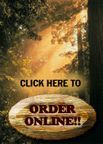
Uses for Weather-Bos™ (i.e. roofs, sidings, fences)
Industries using
Weather-Bos™ (i.e. architects, contractors, wood product
manufacturers)
The advantages of Pre-
Staining your wood
How Much Weather-Bos™
do I Need?
Why does wood turn grey
and dull?
The science behind the
stains which occur on wood.
How to Become a
Weather-Bos™ Distributor/Manufacturer
Is Wood Roofing Safe?
More than 25 years ago the cedar shake and shingle industry recognized the dangers of unprotected un-rated roofs in high fire hazard areas. The industry invested millions of dollars in research, development, and specialized equipment, to create a process that transforms cedar shakes and shingles into permanently fire-retardant roofing products.
These fire-retardant shakes and shingles are subjected to nine stringent UL tests to ensure that they meet all local and national fire codes (most other roofing types must pass just three tests). However, many officials did not believe the process would last - until now!
Rigorous Testing
Weather-exposed sections of cedar shakes and shingles underwent a rigorous and unprecedented series of tests by Underwriters Laboratories at intervals of 1,2,3,5 and 10 years, after which the product was deemed permanent. The permanence of the treatment was later confirmed after a decade of intense testing by the U.S. Forest Products Laboratory. Moreover, the inherent benefits of the natural product beauty, durability, strength and texture "has not been adversely affected by the fire retardant treatment."
Fire-Rated Cedar is Time-Tested
Independent tests by the Forest Products Laboratory, a division of the U.S. Dept. of Agriculture, proved that the pressure-impregnated shakes and shingles have shown no significant loss of fire retardancy after 10 years of continuous severe outdoor weathering.
In 1991, a home in Malibu, CA was found to have pressure-impregnated fire-retardant cedar shakes that were 16 years old. Those shakes were removed from the home and tested by today's standards. They passed the test with flying colors.
The Shake Industry Responds to Consumer Demand
With recent fire code restrictions, manufacturers of alternative roofing materials have been rushing to market with everything from concrete tile with a "wood look," to composite shingles, to steel. All try to imitate the look of cedar shakes as much as possible. The reason for this surge into the marketplace is to meet the consumer demand. The message from the consumer is clear - they prefer the look and texture of wood, whether used on roof or sidewall applications.
The availability of fire-treated cedar shakes and shingles, first tested by Underwriters Laboratories nearly 25 years ago, has continued to open up new design opportunities for architects and builders throughout the United States.
UL Recognition
This important event occurred after 10 years of testing, enabling the use of cedar shakes and shingles on residential and commercial buildings. Dependant upon size, location, or occupancy, buildings are mandated by local building codes to have a Class A, B, or C fire-retardant rated roof. The Underwriters test, known as UL-790, is recognized by the International Conference of Building Officials (I.C.B.O.) as UBC Standard 32-7. All Cedar Shake and Shingle Bureau pressure-treating members meet the requirements of UBC Standard 32-7.
 |
|||
|
Free Orderline 1-800-664-3978
|
|||
 |
|
 |

|
||||||||||||||||||||||||||||||||||||||


